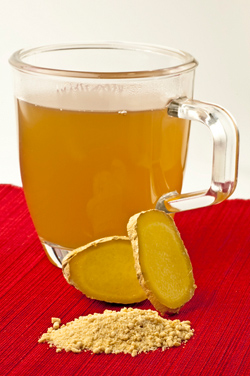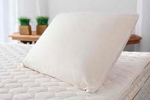By Matthew Scott

Ginger and sesame oil make a powerful pain relief rub
Traditional Chinese Medicine (TCM), with its 2500 year old history, offers many lower back pain remedies – lower back stretches and strengthening exercises, massage techniques, acupuncture, herbal remedies, liniments, sticking plasters and others.
Some require a trained TCM practitioner to administer them, while others can be easily learned and applied by anyone. Here are some effective low back pain remedies and stretches that you can apply yourself to relieve and prevent low back pain.
Lower Back Stretches
Breathe slowly, smoothly and deeply through your nose while doing the exercises.
Exercise1. Lie on your back on a firm bed or the floor. Gently bring your knees up until they’re above your abdominal area. Spread your knees a little and grab the inside of your shins just below your knees, or the inside of your ankles if you can. Inhale. As you exhale let your knees naturally fall further out to the side with gravity. Focus your mind on your back (closing your eyes helps). Feel your inner thighs stretching and your back relaxing. Hold the position for a few minutes as you continue to breathe slowly, smoothly and deeply. This exercise stretches and relaxes your iliopsoas muscle which connects from your lumbar vertebrae to the inside of your hip joints. Tension in this muscle often causes and/or aggravates low back pain.
Exercise 2. Lean across a table and grab the far edge with both hands. Your torso should be on the table and your legs hanging from the edge. Inhale. As you exhale, let gravity naturally pull your legs down towards the floor. Feel your back stretching. Hold the position for several minutes as you continue slow, deep breathing. Focus your mind on your back (closing your eyes helps) and imagine the pain releasing with each exhalation. Repeat several times a day.
Low Back Pain Remedies
1. Ginger & Sesame Oil Liniment
Mix together equal parts of pure sesame oil and the juice from grated ginger. Heat in a pot until warm. Apply a small amount to the painful area and rub it in for a couple of minutes. It should be applied to unbroken skin only. Ginger and sesame oil liniment is a superb, easy-to-make, home remedy for back ache and other aches and pains. It warms, circulates your blood and stops pain. You can safely apply it several times a day, particularly after showering and before bed. Make sure you pull your clothing down over your back immediately after to keep the area warm. Also, while it’s normal for your skin to become hot and turn red after you apply the liniment, if a rash develops discontinue use.
2. Low Back Self-Massage
Can be done standing or sitting. With fists clenched (not too tightly), use the backs of your hands, including your knuckles, to vigorously rub your lower back up and down for several minutes, 3 or 4 times a day. Rub close to your spine and also the sides of your back – wherever you experience pain and stiffness. Self-massage is a highly beneficial low back pain remedy you can do anytime, anywhere to relieve and prevent low back pain. Massage warms the area, moves the blood and directly stimulates your kidneys, which helps to maintain a strong, healthy lower back.
Tip: To greatly enhance the effects of the above lower back pain remedies and lower back stretches, combine them. For example, lie down and do the first 2 stretches, then stand up and do the lower back self-massage, then apply some Ginger & Sesame Oil Liniment. You know your body best though, so experiment till you find what works best for your particular situation. For more lower back pain remedies and lower back stretches visit the authors website.
Matthew Scott is a professionally trained Traditional Chinese Medicine(TCM) practitioner from Australia, with qualifications from the Australian College of Natural Medicine, Brisbane (Acupuncture) and Zhejiang College of Traditional Chinese Medicine, China (Chinese herbal medicine).
In 2000, after 10 years in professional practice in Australia, Matthew travelled to China to continue his studies and immerse himself in the culture for a few months. He’s been there ever since!
Most Popular:

The #1 Mattress for Back Pain


I am a neuromuscular therapist with a chronically tight left illiopsoas. I was perplexed by Excercise 1 for low back since your recommended position puts the hip flexors in deep flexion, not a stretch. In fact when I tried your stretch, I felt my inner thigh attachments stretching but it actually caused my IP to lock up and pull my left hip into an anterior rotation. After doing self trigger point on either side of the inguinol ligament and then correcting the hip rotation by lying face down with a 5 inch firm bolster under my left hip for 10 minutes, I feel as good as new.
A PNF lunge stretch works great for me for the illiopsoas. I get myself in a proper lunge position and then push my knee back against the floor as if trying to flex my hip but the floor prevents any anterior movement. I hold this for 5-7 seconds and then relax and restretch, repeating 3x.
whatis your view of using the DRX machine to treat sciatica